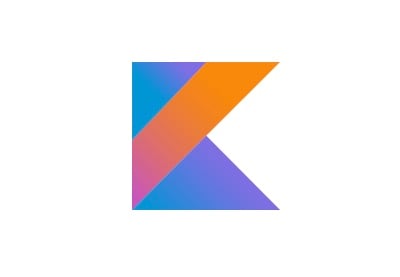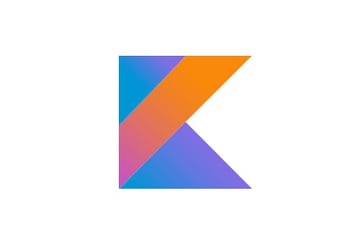Java is among the most widely used programming languages and platforms today. It is prevalent due to its efficiency and simple syntax. It is known for its speed and reliability and is used for web applications, desktop computers, gaming consoles, and even the most complex scientific supercomputers. And of course, Java is the language of the Android mobile OS and is the widely-used for coding Android apps.
However, to use the language and platform with all their glory, you must have a firm grasp on the Java basics that we are disclosing right here!
What Is Java?
Before proceeding any further, let’s take a minute to break down the Java language.
Essentially, Java is a general-purpose, object-oriented, class-based programming language. It is compiled to a bytecode representation, which is executed by a virtual machine. This makes the language cross-platform and Java programs can be run on many different devices and operating systems. Java is an excellent choice for new application developers because it is fast, safe, and reliable for the long term.
It is mainly used to develop smart applications in laptops, cell phones, gaming consoles, and data centers. Java has been around since 1995, since it’s creation by James Gosling, and has grown into one of the most popular and valuable languages in the world.
The Uses Of Java In a Nutshell
Java is used for multiple purposes due to its versatility. Some of the common uses of the language and platform include:
- Android apps
- enterprise software
- scientific computation
- big data analytics
- web servers and server-side technology
The Java Platform is a collection of programs that helps developers create and run Java programming apps with efficiency. It has a compiler, execution engine, and a set of libraries (the Java API) .
The Java Platform and its Components
While brushing up on the Java basics, it is necessary to understand the how the Java programming language works.
First you write a Java program—the source code. This is a human-readable language that is easy for a human to understand, but is not directly executable by the CPU.
Then the source code is compiled, using the Java Development Kit (JDK) into a bytecode representation. This is a version of the Java program that can be easily understood by the computer, though it’s difficult for a human to read.
Finally that bytecode is executed by the Java Virtual Machine (JVM). This is essentially a simulated computer that runs on your computer hardware, and is responsible for executing Java bytecode. With the help of a just-in-time compiler (JIT), this bytecode is converted on the fly to the machine code which your computer or device will run.
Key Technologies of Java
Java Standard APIs
Java ships with wide-ranging and well-designed APIs covering everything from data types and common algorithms to specialized APIs like XML parsers and 3D rendering. The Java APIs help you write your program by providing many commonly-needed functions so you don’t have to.
Java Development Kit (JDK)
The Java Development Kit/ JDK is a software development environment that is used to create Java applications and applets. It can be used on Solaris and Linux along with macOS and Windows. One of its important functions is to compile Java applications into bytecode.
The fun fact is that you can download more than one version of the JDK on the same computer. The JDK is equipped with the tools required to write Java programs and then later execute them via JRE. It includes a compiler, applet-viewer, and also a Java application launcher that help the compiler convert code into Java bytecode.
Java Virtual Machine (JVM)
The Java Virtual Machine is the engine that provides the runtime environment to execute the Java applications and code. It converts the previously obtained bytecode into machine language on the fly.
The JVM is an integrated part of the Java Runtime Environment. The JVM offers a platform-independent way of executing the Java source code.
Versions of the JVM are available on many platforms. Once you compile your program, it can in theory run on any JVM, using the same source code for multiple platforms.
Java Runtime Environment (JRE)
The Java Runtime Environment is used to run your Java programs. It holds the class libraries, JVM, and a loader class. In case you wish to run a Java program, you will need a JRE.
The JRE does not hold any tools for Java development like a compiler or debugger. That’s what the JDK is for!
OOP And Glossary
Java is an Object-Oriented Programming language that is used to solve complex problems by breaking them down into smaller sub-problems.
Here is a quick glossary for Java as a object-oriented language.:
Class: a blueprint or template/prototype that defines methods and data members of any given object. It is defined by the use of a class keyword. Objects are the instance of each class.
Object: a distinctly identifiable real-world entity is known as an object. A chair, square, or any such thing can be considered an object. It has a unique behavior, state, and identity. The data fields with the current values represent the state of the object.
Abstraction: a method of hiding irrelevant information from the concerned user. If a racer only knows how to drive a car, then they must not necessarily know about the mechanics of the vehicle. The Java abstract keyword is used in this situation.
Encapsulation: encapsulation binds data and functions into a single unit. A class can act as an encapsulation for another class—also called a “wrapper”. An example is the Java bean: it is a fully encapsulated class for reference.
Inheritance: it is a mechanism used to acquire the features of a class. It is used by extending the keywords and boosts the reusability of the code.
Polymorphism: the ability to appear in multiple forms–shapeshifting of sorts. A single action can be carried out in numerous ways, depending on the target objects
Why Learn Java?
- Java is essential for individuals who want to code in specific niches. For example it is very important for creating Android apps.
- The OOP programming model is secure and based on authentic techniques for public-key encryption. It is a robust platform that eliminates error-prone situations by focusing on time error and runtime error.
- The Write Once, Run Anywhere system, based on the JRE and JDK is exceptional on its own. It creates multithreaded programs that ensure high performance in every step of program development, no matter what device they’re running on.
- Java has become ever more popular over time and, thus, is a high-paying skill.
Final Thoughts
In conclusion, it is safe to say that Java is a dynamic language and a platform that is poised for further growth. From beginners to masters of the craft, Java is the ultimate solution for many challenges faced in the product life cycle of software development.
A little homework and a lot of dedication are all it takes to master the language of the Java multiverse! You can learn lots more about Java programming and about coding for Android mobile apps. Envato Tuts+ is a great place to start!








